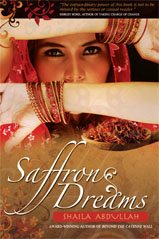Another reference to the Washington and Lee University research study done on Saffron Dreams, this time by the Association of Psychological Science Observer. See an excerpt below:
According to a study led by psychology researcher Dan Johnson, the exploration of fictional characters’ inner lives may even help counter certain racial, ethnic, and cultural biases. Johnson, an assistant professor of psychology at Washington and Lee University, assigned a subset of 68 study participants to read an excerpt from the 2009 novel Saffron Dreams by Shaila Abdullah. The story’s protagonist, a counter-stereotypical Muslim woman, is attacked by a group of male teenagers who spew racial and ethnic slurs at her. The other participants simply read a synopsis of the excerpt, devoid of descriptive prose and dialogue.
Next, the researchers showed the participants a series of pictures of ambiguous-race faces and asked them to rate them as either Arab, Caucasian, mixed but mostly Arab, or mixed but mostly Caucasian.
The participants who read the actual excerpt were more likely than the synopsis readers to categorize people as mixed race, rather than identifying them as either Arab or Caucasian. In essence, racial categories became less salient for them after they read Abdullah’s story.
In a second experiment, Johnson and his colleagues recruited 110 students online and had them read either the excerpt of the novel, a brief synopsis, or a separate piece about the history of the automobile. Afterwards, the participants viewed 12 images of the ambiguous-race faces expressing varying levels of anger. Again, the students were asked to assign each face to one of the same four categories used in the earlier study. Participants who read the synopsis or the history piece tended to categorize the most intensely angry faces as Arab. But those who read Abdullah’s narrative showed no such bias.
This led Johnson and his team to conclude that artfully written, evocative fiction helps people identify with characters from different cultures — and thus disrupts readers’ tendency to stereotype and judge.





 Most of us grew up hearing that reading broadens a person’s perspective. Now a study proves that reading literary fiction like my 2009 book
Most of us grew up hearing that reading broadens a person’s perspective. Now a study proves that reading literary fiction like my 2009 book